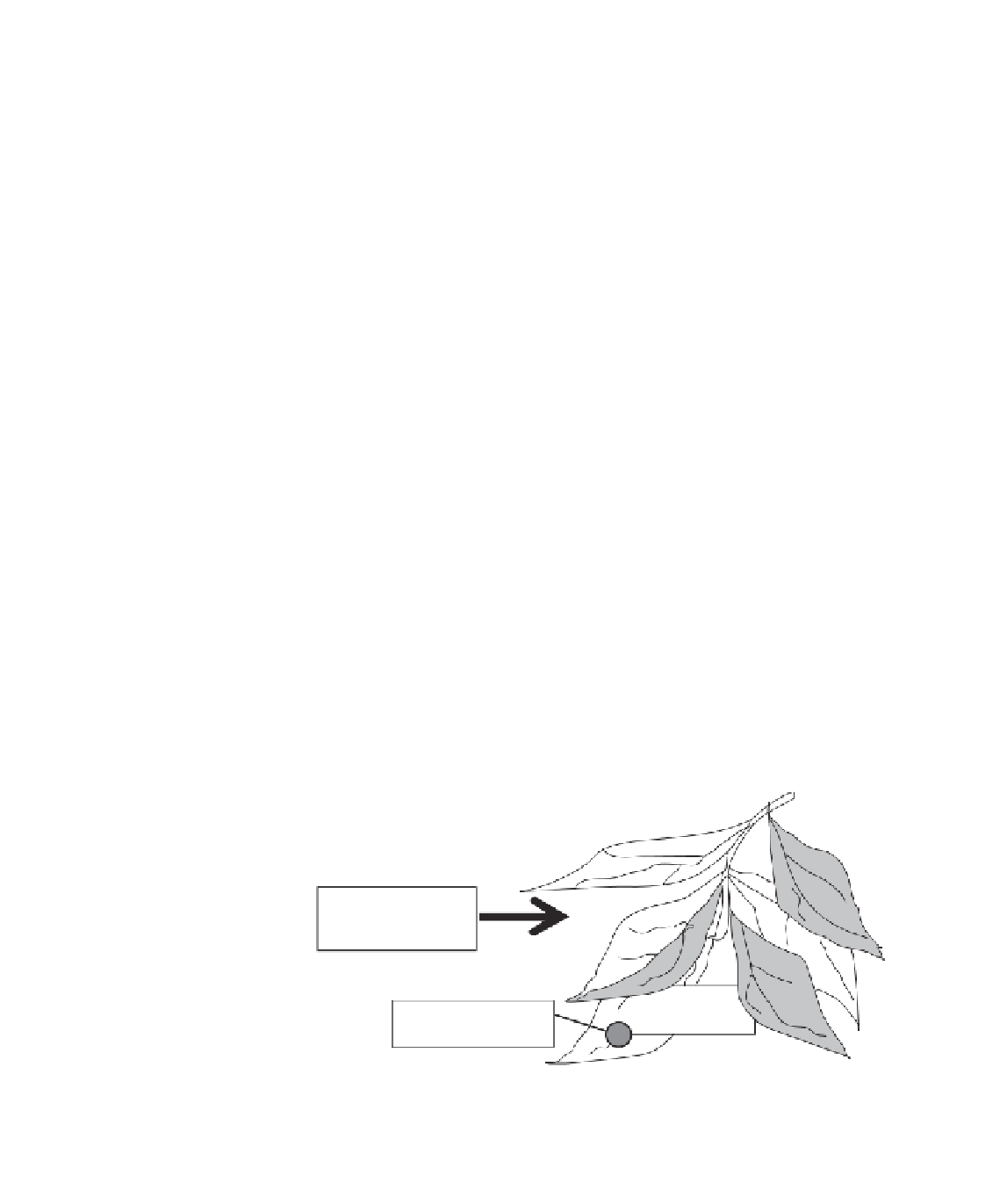Geoscience Reference
In-Depth Information
and:
0.67
⎛
⎞
R D
R D
(21.11)
C
=
H
≈
1.3
⎜
⎟
⎝
⎠
H
C
Thus, in summary, the boundary-layer resistances of vegetation components
associated with molecular diffusion through boundary layers are similar in
magnitude (but not identical) for most atmospheric transfers. However, the
boundary-layer resistance for momentum transfer is substantially less than for
other exchanges, by about an order of magnitude. As discussed later in Chapter 22,
this characteristic difference in boundary-layer resistance means the effective sink
of momentum in a vegetation canopy tends to be higher than the effective average
source/sink for other transferred entities. This, in turn, results in different values
for the aerodynamic resistance for different canopy-atmosphere transfers.
Shelter factors
The area-average boundary-layer resistance for all the leaves acting together above
a square meter of ground at a particular level in a plant canopy is given by the
parallel sum of their individual boundary-layer resistances. However, this implic-
itly supposes that each individual leaf is exposed to the same canopy air stream. In
fact the leaves inside real canopies are not isolated and, as a result, they are not all
equally exposed to the same average microclimate at any level. Rather, they are
usually clumped together to some extent, with the result that the values of atmos-
pheric variables (most significantly, wind speed) outside the boundary layer of an
individual leaf will differ from those for another leaf, and both will differ from the
values in the air stream at each level in the canopy, see Fig. 21.4.
Clearly it is not practical to describe the aerodynamics of every individual leaf in
a canopy together with their mutual interference, so some form of empirical correc-
tion is required. Studies in wind tunnels suggest that the general effect of mutual
Mean canopy air
stream weather
variables
Figure 21.4
Ve g e t a t i o n
clumping gives rise to differences
between the atmospheric
variables outside the boundary
layer of individual leaves.
Leaf-specific
weather variables
Leaf surface specific
weather variables








